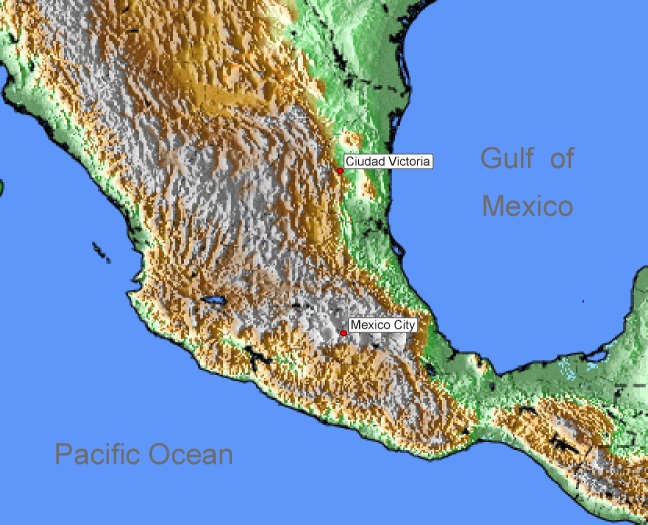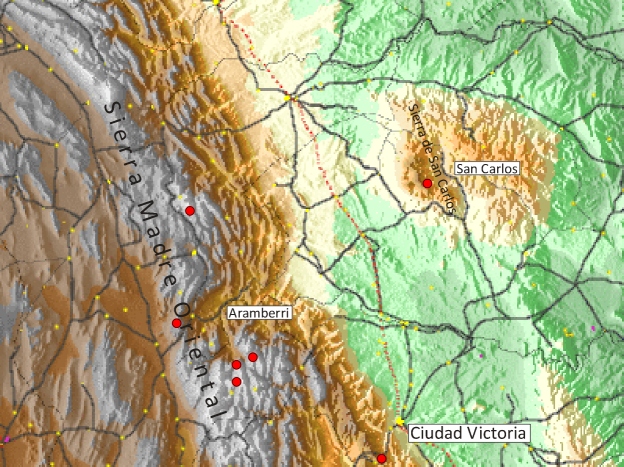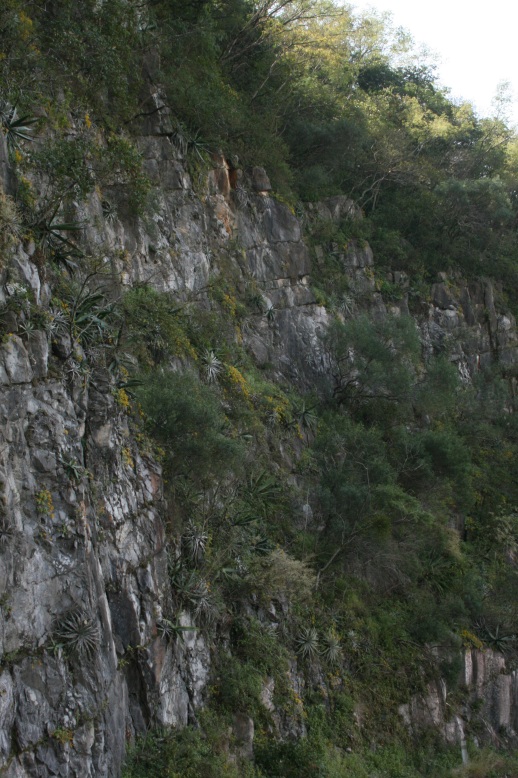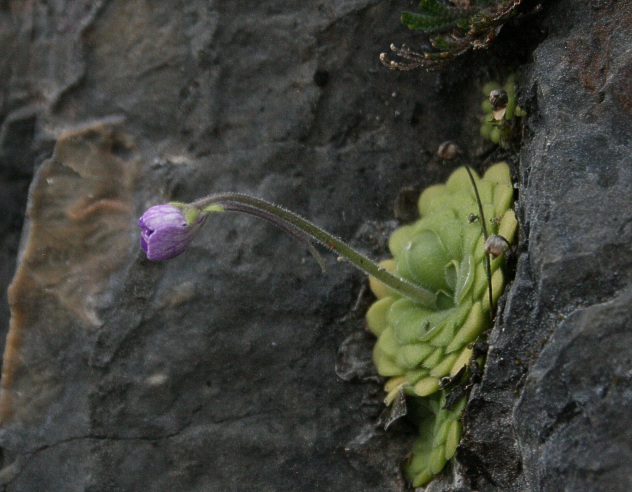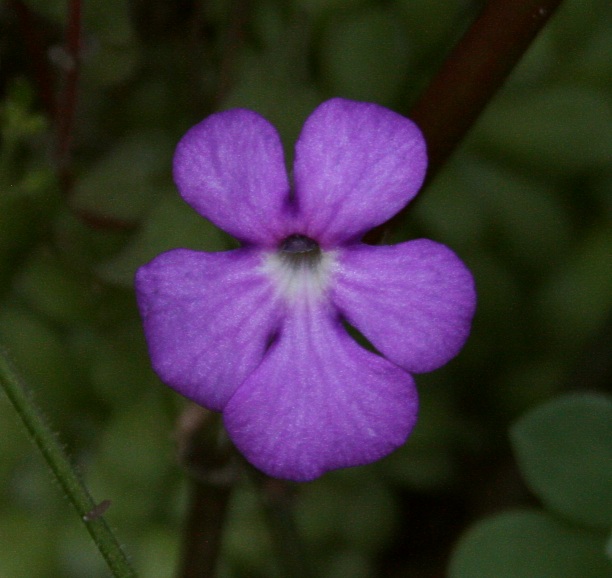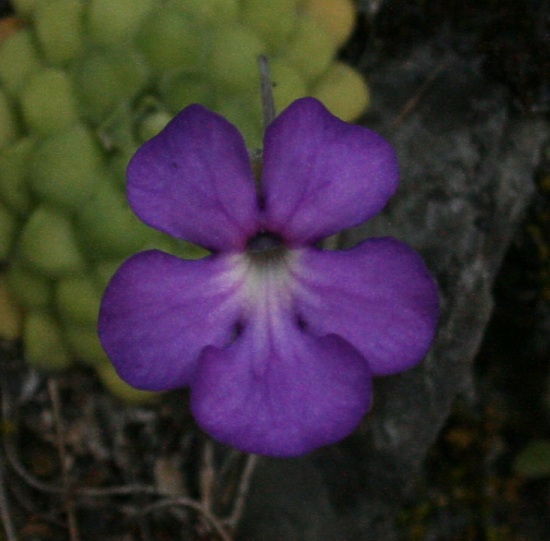
Oliver Gluch's World of Carnivorous Plants or: "What you always wanted to know about butterworts" |
| Impressum |

| Home | Origin | Prey | Species | Plant Purchase | Other Carnivorous Plants | Info about Carnivorous Plants | About me |
Pinguicula cyclosecta Casper (1963)Topographic
map
of Central Mexico with the location of the city of Zimapán,
state of Hidalgo.
Topographic
map with all known locations of P. agnata
(red dots) in the Mexican states of Hidalgo, Querétaro and Guanajuato.
Plants collected from the "locus classicus" (located northeast
of Zimapán) served for the species description.
Landscape
south of the Sierra Gorda close to the village of El Lobo in the state
of Querétaro with a typical vegetation of a "mattoral submontaneo"
during the rainy season.
22nd February 2015 Landscape
south of the Sierra Gorda during the dry winter season. The only
humidity available for the plants during this season does come from
morning fogs or clouds coming down from the mountains into the
valley. As most of the shrubs and bushes are deciduous and therefore
lose its foliage over winter, the lanscape gives a quite bleak
impression.
22nd February 2015 Typical
habitat of P. agnata (here along the road
from Xilitla to Landa de Matamoros close to the village El Lobo, at an
elevation of about 1600 m).
Plants grow on vertical calcareous cliffs. Close by to that site there
is also
P. moranensis occuring.
22nd February 2015 "Locus
classicus" of P. agnata on steep, vertical,
calcareous cliffs above the
Tolimán river canyon north of the city of Zimapán in the state of
Hidalgo. The species was described based on plants collected from this
site (but collected from more accessible places).
29th August 2009 P.
agnata plants on vertical cliffs above the Tolimán river. Only few
seeds do make it to establish and grow in crevices or on
mosses. As plants tend to divide from time to time, there are often a
group of plants together at one spot.
4th October 2015 Plants
in winter rosette at the location of "El Lobo". Around the winter
rosettes there are still the dried summer leaves visible.
4th October 2015 Beside
P. agnata there are only few other plant
species, like cacti or
succulents (here a Hechtia species), that can grow
permanently under
those conditions on the vertical cliffs. Humidity from morning dew or
from clouds appearing in the afternoon is the only source of water for
the plants at this time of the year.
22nd February 2015 Red
to salmon coloured winter rosette of P. agnata at
the "El Lobo" site.
During the dry season the winter rosette is compact and the leaves are
shorter compared to summer leaves. The upper surface of the leaves are
densely covered with white hairs. Those hairs probably also serve to
collect humidity from the air.
22nd February 2015 Winter
rosettes (in culture).
22nd February 2015 Plants
of P. agnata in summer rosettes in the "Barranca de
Tolimán" (Tolimán
canyon) 2 to 3 m above the river bed (1300 m above sea level).
Due to very dry
conditions at the time point of visit the summer leaves were quite soft
and thin (probably due to lack of humidity).
4th October 2015 Plants
are using any opportunity in crevices or mosses to grow on those
vertical cliffs.
4th October 2015 |
